We believe that making clothing in the U.S. from American-sourced materials is necessary to continue to build back our country’s tailoring ecosystem that was once robust in the 1800s. This domestic dedication, however, is tempered by the search for the absolute best in the world. That pursuit can take us abroad.
Indeed, our hunt for the best recently took us to Milan, Italy. Dubbed the “fashion capital of the world,” Milan is revered for its craftsmanship, fashion weeks, Campari and cafe culture. And also some of the finest fabrics known to man. It’s a trip we’ve been waiting to take since we founded CMMP, so you know we had to spend a week exploring.
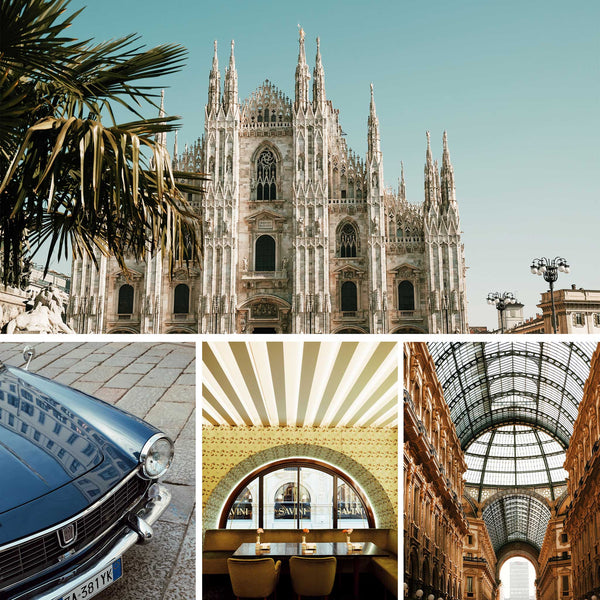
BARS
In our research on the city we learned of a secret bar that has been referred to as the “most inaccessible bar in all Milan” - the 1930 cocktail bar. Apparently, “Either you are invited or you are not. Either you are in or you are out. It’s simple.” We were intrigued. The only way to find it and enjoy its inner sanctum and spirits was to frequent one of their sister bars in Navigli and hope to make friends with the right people. So that’s exactly what we did and smooth-talked one of the hosts to jot down an address on a napkin - and at midnight we were off. We took an Uber Black car (since that’s the only Ubers available in Milan of course) and drove for 30 minutes into the night to a neighborhood that wasn’t on any tourist map. What we can only describe as akin to New York’s upper East Side, it was dark and we were lost. The street number didn’t appear on any of the buildings so we tracked down a resident walking his dog and in broken Italian asked where the bar was located. It worked. We opened an unassuming door, told them our names, and were whisked behind yet another secret door to a small, dimly lit room and were sat on stools facing a large curiosity cabinet of rare liquor. It was late - and we were still jet lagged - so the exact nature of what we had to drink is unknown. But it was boozy and great. We took these drinks downstairs into a cavernous old brick structure, which we quickly learned was the smoking lounge. While the next day we had serious hangovers, the adventure and experiencing Milan’s top bar was worth it.
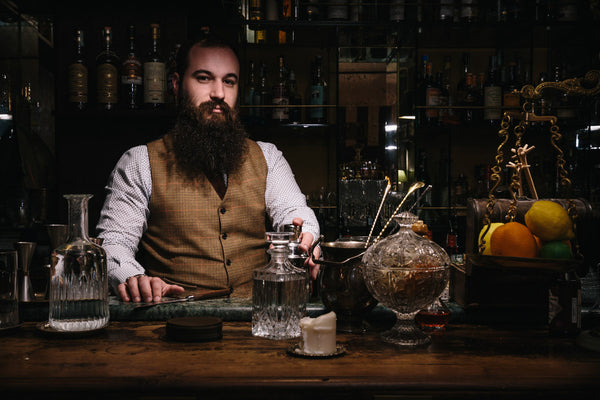
ART
On instagram we had always seen the ubiquitous gold leafed building that adorns one the structures at Fondazione Prada (“FP”). To be honest, however, we didn’t really understand what the Fondazione was or why it existed. Nonetheless, anything Prada is worth exploring. We were advised that we should purchase tickets ahead of time as it’s only open a few days a week and hyper competitive to get into. So we did. On our Thursday trip to FP, we were full of excitement to discover something new. And we were not disappointed. FP as we became aware is a multi-functional campus with a cinema, cafe designed by Wes Anderson (complete with a Steve Zizzou pinball machine), a large exhibition space (called the “Podium”) and several floors of an art gallery (called the “Torre”). The Milan structure was conceived by architecture firm OMA—led by Rem Koolhaas— “expands the repertoire of spatial typologies in which art can be exhibited and shared with the public. Characterized by an articulated architectural configuration which combines seven existing buildings with three new structures (Podium, Cinema and Torre), the venue is the result of the transformation of a distillery dating back to the 1910’s.” There was no hint of Prada clothing other than on the employees, and of course, other visitors. This was art and culture, not fashion.
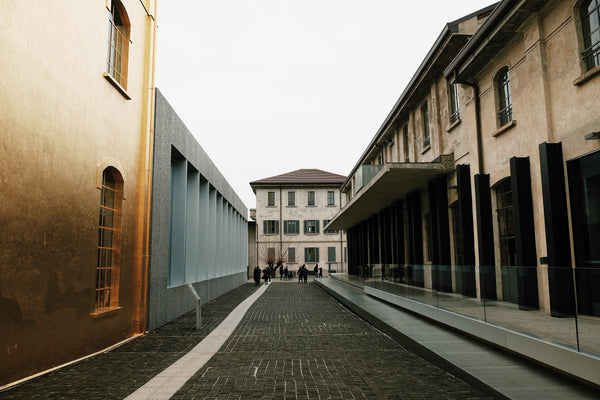

We first entered the Podium to view artist Simon Fujiwara’s “Who the Bær,” an original cartoon character that inhabits a universe created by the artist. As the website states, “Who the Bær is a cartoon bear without a clear character – “Who” as they are known, seems to have not yet developed a strong personality or instincts, they have no history, defined gender or even sexuality. Who the Bær only knows that they are an image, and they seek to define themselves in a world of other images...In this sense the world of Who the Bær is a world of freedom: Who can be whoever they wish to be, Who can transcend time and place, Who can be both subject and object. Yet Who the Bær may never be able to overcome their one true challenge – to become anything more than just an image.” If you’re confused, you’re not alone - it was a weird yet captivating experience presented “in a giant labyrinth made almost entirely from cardboard and recyclable materials and forming the shape of a bear. As visitors travel through the bear-like installation, they are introduced to the basic design and formation of the cartoon character of Who the Bær before embarking on a series of adventures that follow Who the Bær around their world. Told through drawings, collages, sculptures and animations, we witness Who the Bær in their perennial quest for an authentic self.” The experiential art exhibit was at times pornographic (photos of human genitalia were likened to bear tongues), political (in a piece called “The United States of Who”), but in its entirety - powerful. It made us reflect on not only how we would create our own bear character, but also what perhaps inspired other cartoon characters we know and love.
Inside 6 exhibition levels of Torre, was project “Atlas”, which emerged from a dialogue between Miuccia Prada and Germano Celant. “It hosts works from the Prada Collection displayed in a sequence of environments incorporating solos and confrontations, created through assonances or contrasts, between artists such as Carla Accardi and Jeff Koons, Walter De Maria, Michael Heizer and Pino Pascali, William N. Copley and Damien Hirst, John Baldessari and Carsten Höller.” As Damien Hirst fans we were pleasantly surprised to see his work, a huge canvas of real bees, what seemed like millions of them, as well as provoking but brilliant displays with flies. But what was most striking was Carsten Höller”s “Upside-Down Mushroom Room (2000)” - which is exactly what it sounds like. You’re first taken through a pitch-black labyrinth where your only guide is a railing they tell you to keep hold of - terrifying for those like us who are a bit claustrophobic. But that terror was turned quickly into awe as we entered a large room with huge spinning mushrooms attached to the ceiling of a pink-lit room. It felt a bit like we were transported to Alice in Wonderland’s world - fantastic and bizarre.
We then headed straight to FP’s watering hole, Wes Anderson designed-Bar Luce for Belini’s and a panini - a much-needed respite for all the images we had just seen. While we had no expectations upon arrival, we were completely blown away by the art and experiences we had. We are now converts - Fondazione Prada is a must on any trip to Milan.
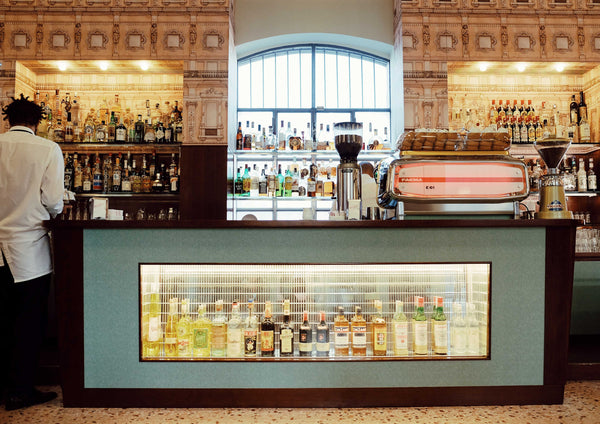
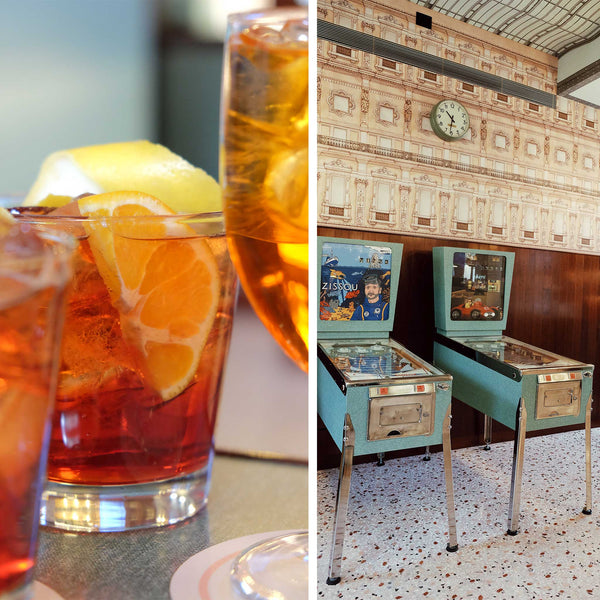
The Milano Collection of Hand-Picked Fabrics
Italians are known to produce the best warm-weather fabrics. Principally among them is linen - a fabric derived from the flax plant stem grown in cool climates. Linen is great for hot climates because it is moisture-resistant, hypoallergenic and breathable. While it does wrinkle, that’s ok. It’s precisely the attitude the wearer intends to exude - an overt nonchalance against anything non-leisure. Real flax linen gets softer over time, is sturdy, has naturally occurring “slubs” or imperfections, but it’s the mark of true linen. Just take a walk through the city or more importantly Via Montenapoleone and you will find the neighborhood “Nonni” or grandpa’s strolling around in their perfectly tailored linen suits that have been through it all but somehow still look immaculate.
So when we found ourselves in Milan we were in search of the real thing. After traveling to several purveyors, we found the real stuff. We purchased a black and cream striped large scale linen in both a blue and tan additional stripe. These two Italian linens are appropriate for a shirt, blazer, shorts or suit. We dubbed them our “Como Linens”, in honor of our trip to the lake from the same name. Bold, unique and yet timeless, these fabrics are quintessential Italian linen of the highest quality.

We also found a few other “hand-picked” fabrics for our Milano Collection. After hours of searching through bolt after bolt, we discovered a large scale blue/white zig-zag plaid in a lightweight wool perfect for warm-weather trousers. We dubbed it the “Lapo Plaid” after one of Italy’s most daring and dashing gents - Lapo Elkann.
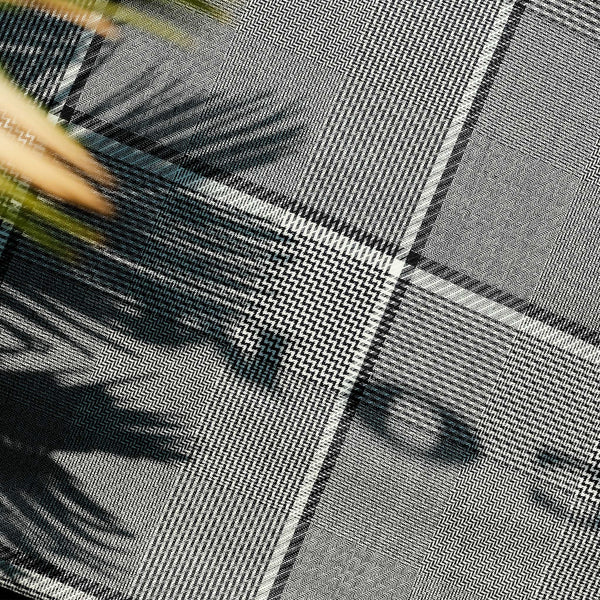
Lastly, we were captivated by a cream, blue, black and green geometric fabric fitting for a summer short. We named it the “Duomo Geometric” after Milan’s famous cathedral (not to be confused with Florence's more famous Duomo). Paired with a solid polo, button-down or T-shirt, these shorts will be epic.
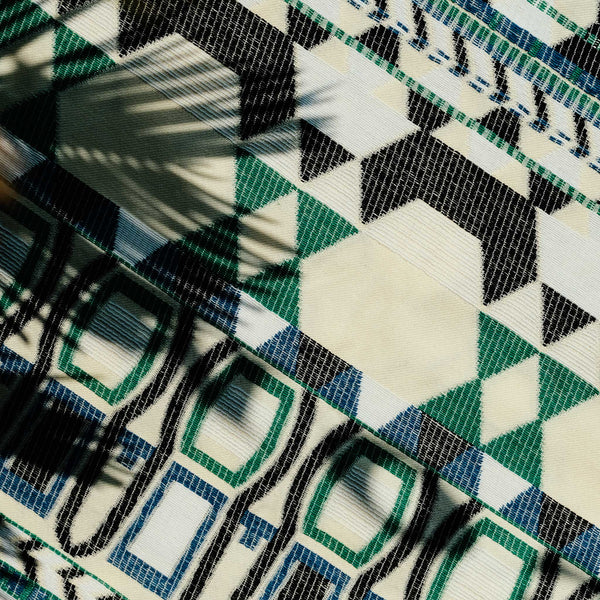
In sum, our trip to Milan was worth the 13-year wait. These fabrics, however, will not last that long as they are in very limited quantities. Until we meet again, ci vediamo Milano.
